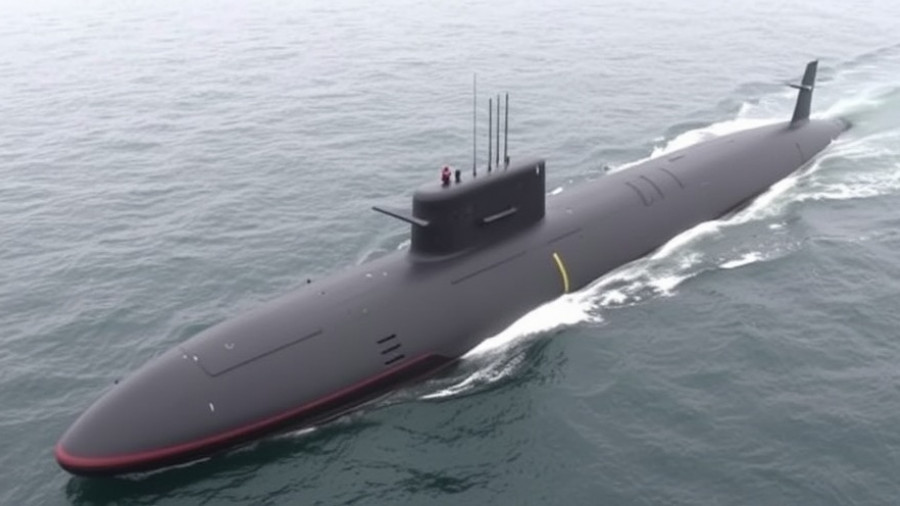
Exploring the UK-Turkey Warship Recycling Relationship
In an increasingly interconnected world, the disposal of naval vessels is more than just a matter of logistics; it is also a reflection of geopolitical relationships and national capabilities. The recent agreement concerning the HMS Bristol, a former Type 82 destroyer, has drawn attention to Turkey's enduring role as a destination for the recycling of UK naval assets. As the UK’s Ministry of Defence announces that HMS Bristol will journey over 3,000 nautical miles to Turkey for recycling, it begs the question: what does this mean for the UK’s defense industry?
Historical Context: A Shift in Naval Recycling
The story of the HMS Bristol is part of a larger narrative. The last successful British naval vessel recycling was completed over a decade ago with the dismantling of HMS Cornwall. Since then, recycling contracts have largely fallen to Turkish shipyards, such as Leyal Ship Recycling, which have gained a significant foothold in this sector. This shift raises important questions about the UK’s capacity to handle its own naval disposals and what that signals for the future of the domestic shipbuilding industry.
Deficiencies in Domestic Recycling Capabilities
The lack of competition from UK shipyards for the HMS Bristol contract highlights a concerning trend within the UK maritime sector. Since the introduction of regulations mandating that UK ships be recycled at approved facilities, the absence of viable local options suggests systemic issues. UK shipyards are under pressure to modernize and adapt to regulatory requirements while also maintaining their competitiveness globally. The HMS Bristol case points towards an industrial gap that could undermine the UK's strategic autonomy in naval matters.
Current Trends: Increasing Reliance on Turkey
Turkey's increasing dominance in the warship recycling market is not merely an accident of circumstances; it reflects a decisive economic strategy. With strong investment in shipyard infrastructure and facilities meeting EU recycling standards, Turkey has positioned itself as a go-to destination for disposing of outdated naval assets. Recently, the trend has continued with the former Type 23 frigate HMS Monmouth also being sold for recycling in Turkey, further solidifying this pattern.
Future Predictions: What Lies Ahead for UK Naval Assets?
The trend of shipping naval vessels to Turkey leaves many unanswered questions about the future of the Royal Navy’s operational capacity. As older ships are decommissioned, the immediate concern is finding suitable replacements for specialized vessels like the harbour training ships. Suggestions of utilizing recently decommissioned Type 23 frigates could address training needs, but it remains uncertain if they can adequately fill the gap left by HMS Bristol.
Diverse Perspectives on Heritage and Disposal
As the UK faces a critical point in its naval heritage, opinions diverge on the impacts of recycling abroad. Some view the recycling of HMS Bristol and others as a loss of historical significance. Others argue that the efficiencies of Turkey's shipyards offer a pragmatic solution for outdated vessels. Balancing these perspectives is essential for public sentiment and policy-making in defense and maritime affairs.
Actionable Insights: Advancing Domestic Recycling Measures
Enhancing the UK’s maritime recycling capabilities could have multiple benefits. By investing in local shipyards, the government can not only revitalize an important sector but also ensure that the nation retains control over its maritime resources. Stakeholders—from policymakers to shipyard workers—need to engage in discussions about sustainable ship recycling practices that can lead the UK towards becoming a self-sufficient player in this vital domain.
In conclusion, the recycling of HMS Bristol in Turkey exemplifies the complexities and challenges facing the UK maritime industry. With implications for national security, economic viability, and historical heritage, it is crucial for stakeholders in Mississippi and beyond to engage in dialogue about the future of naval asset recycling. The UK must consider if it wishes to regain its historical role as a leader in maritime innovation, or accept a secondary position in an industry increasingly dominated by foreign shipyards.
If you're interested in the future of the UK’s maritime capabilities and how you can be involved, stay informed about developments in the industry. Your involvement may be vital in shaping a more sustainable future for the nation’s naval recycling practices.
 Add Row
Add Row  Add
Add 




Write A Comment